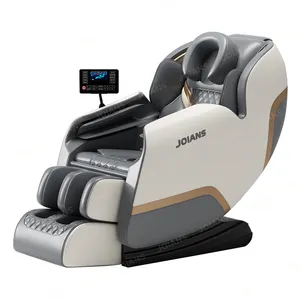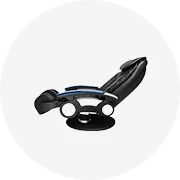Phổ biến trong ngành của bạn






Máy Phát Hiện Nuôi Trồng Thủy Sản RIKA RK500-13 Sản Xuất Cảm Biến Độ Mặn Chất Lỏng EC
4.043.948 ₫ - 4.984.993 ₫
Đơn hàng tối thiểu: 1 Cái







LANBAO U Shape PU05 Series Khe Cắm Cảm Biến Quang Điện Cho Không Gian Nhỏ
83.168 ₫ - 116.232 ₫
Đơn hàng tối thiểu: 1 Cái
Vận chuyển mỗi chiếc: 316.395 ₫







S-loại KS1 điện tử kỹ thuật số Trọng lượng Quy mô băng ghế dự bị quy mô cảm biến hợp kim Vật liệu thép tải cell2t/5T/10T
680.605 ₫ - 4.118.723 ₫
Đơn hàng tối thiểu: 1 Cái







FD Series Hiển Thị Kỹ Thuật Số Cảm Biến Tiệm Cận Vị Trí Sợi Quang Cho 12V Đến 24V
429.320 ₫ - 873.392 ₫
Đơn hàng tối thiểu: 1 Cái







Flat Mini Micro nhỏ đầy đủ cầu tải tế bào cảm biến 10(kg) 20(kg) 30(kg) 50(kg) cho hành lý cá và thông minh vanding máy
Sẵn sàng vận chuyển
19.076 ₫
Đơn hàng tối thiểu: 1 Cái
Vận chuyển mỗi chiếc: 152.348 ₫







Cảm Biến 50A Vòng Lặp Kín CSNP661
Sẵn sàng vận chuyển
228.903 ₫ - 236.533 ₫
Đơn hàng tối thiểu: 1 Cái
Vận chuyển mỗi chiếc: 508.673 ₫





Linh Kiện Điện Tử Cảm Biến Lực Tùy Biến Cảm Biến Tải Trọng Có Công Suất 5Kg
19.076 ₫ - 190.753 ₫
Đơn hàng tối thiểu: 3000 Cái



R308 Cảm Biến Mô-đun Quét Kiểm Soát Truy Cập Vân Tay Quang Học Với Dung Lượng Lưu Trữ 500
216.186 ₫ - 254.337 ₫
Đơn hàng tối thiểu: 2 Cái




Cảm biến mô-men xoắn động 1000nm 5000nm công suất lớn gts210 để đo lực quay mô-men xoắn
15.005.845 ₫ - 15.260.181 ₫
Đơn hàng tối thiểu: 10 Cái
Vận chuyển mỗi chiếc: 2.703.596 ₫






Hi-liên kết mới nhận dạng vân tay mô-đun HLK-ZW0608 bán dẫn Công suất vân tay chụp cảm biến cho khóa cửa thông minh
125.897 ₫ - 130.984 ₫
Đơn hàng tối thiểu: 1 Cái
Vận chuyển mỗi chiếc: 210.082 ₫






Okystar OEM ODM Cảm Biến Độ Ẩm Đất Điện Dung Tương Tự Chống Ăn Mòn V1.2
Sẵn sàng vận chuyển
8.139 ₫ - 9.157 ₫
Đơn hàng tối thiểu: 25 Cái
Vận chuyển mỗi chiếc: 15.006 ₫

YFI-1 kỹ thuật số Dung lượng pin Tester LCD hiển thị pin chỉ số năng lượng mô-đun phát hiện hiện tại/cảm biến
91.562 ₫ - 95.377 ₫
Đơn hàng tối thiểu: 10 Cái
Các danh mục hàng đầu
Giới thiệu về cảm biến công suất điện tử
Ngày nay, cảm biến công suất điện tử không còn là điều mới mẻ đối với những người bình thường và không còn bị coi là điều cấm kỵ khi sử dụng. Nếu bạn đang tìm kiếm niềm vui áp chót đó, bạn phải kiểm tra sự bao la. Bộ sưu tập cảm biến công suất điện tử tại Alibaba.com. Những gợi cảm và cong. cảm biến công suất điện tử đáng giá từng xu và chắc chắn làm cho đêm đó trở nên đặc biệt đối với bạn. Những con búp bê này có ngoại hình giống như thật, bắt đầu từ tóc đến ngón chân theo mọi nghĩa.
Cho dù bạn là một người cô đơn đang tìm kiếm một người bạn đời như cuộc sống hay một cặp vợ chồng muốn thêm gia vị cho cuộc sống của họ, bạn đều có thể sử dụng chúng . cảm biến công suất điện tử để đốt cháy ngọn lửa đó. Những ngoạn mục. cảm biến công suất điện tử có thể tùy chỉnh theo mong đợi của bạn. Những điều tuyệt vời. cảm biến công suất điện tử có sẵn ở cả phiên bản dành cho nam và nữ và được làm từ silicone cấp y tế để sử dụng an toàn. Hãy sở hữu ngay bây giờ và tận hưởng một đêm đam mê và cháy bỏng.
Alibaba.com cung cấp những điều tuyệt vời này. cảm biến công suất điện tử ở mọi hình dạng cơ thể, kích thước và sắc tộc. Dù yêu cầu của bạn đối với. cảm biến công suất điện tử, bạn có thể tải tất cả chúng trên trang web. Những cái này. cảm biến công suất điện tử được tạo hình bởi những người thợ thủ công giỏi nhất và mọi chi tiết phức tạp đều được kiểm tra kỹ lưỡng. Những con búp bê này có mắt, tóc, móng tay và tất cả các bộ phận cơ thể khác tương tự như người thật.
Alibaba.com cung cấp nhiều loại. cảm biến công suất điện tử có thể giúp bạn mua các sản phẩm phù hợp với ngân sách và các yêu cầu khác của bạn. Các sản phẩm này an toàn để sử dụng, được chứng nhận và thân thiện với môi trường trong tự nhiên. Đơn đặt hàng OEM có sẵn trên các sản phẩm này.
Cho dù bạn là một người cô đơn đang tìm kiếm một người bạn đời như cuộc sống hay một cặp vợ chồng muốn thêm gia vị cho cuộc sống của họ, bạn đều có thể sử dụng chúng . cảm biến công suất điện tử để đốt cháy ngọn lửa đó. Những ngoạn mục. cảm biến công suất điện tử có thể tùy chỉnh theo mong đợi của bạn. Những điều tuyệt vời. cảm biến công suất điện tử có sẵn ở cả phiên bản dành cho nam và nữ và được làm từ silicone cấp y tế để sử dụng an toàn. Hãy sở hữu ngay bây giờ và tận hưởng một đêm đam mê và cháy bỏng.
Alibaba.com cung cấp những điều tuyệt vời này. cảm biến công suất điện tử ở mọi hình dạng cơ thể, kích thước và sắc tộc. Dù yêu cầu của bạn đối với. cảm biến công suất điện tử, bạn có thể tải tất cả chúng trên trang web. Những cái này. cảm biến công suất điện tử được tạo hình bởi những người thợ thủ công giỏi nhất và mọi chi tiết phức tạp đều được kiểm tra kỹ lưỡng. Những con búp bê này có mắt, tóc, móng tay và tất cả các bộ phận cơ thể khác tương tự như người thật.
Alibaba.com cung cấp nhiều loại. cảm biến công suất điện tử có thể giúp bạn mua các sản phẩm phù hợp với ngân sách và các yêu cầu khác của bạn. Các sản phẩm này an toàn để sử dụng, được chứng nhận và thân thiện với môi trường trong tự nhiên. Đơn đặt hàng OEM có sẵn trên các sản phẩm này.











